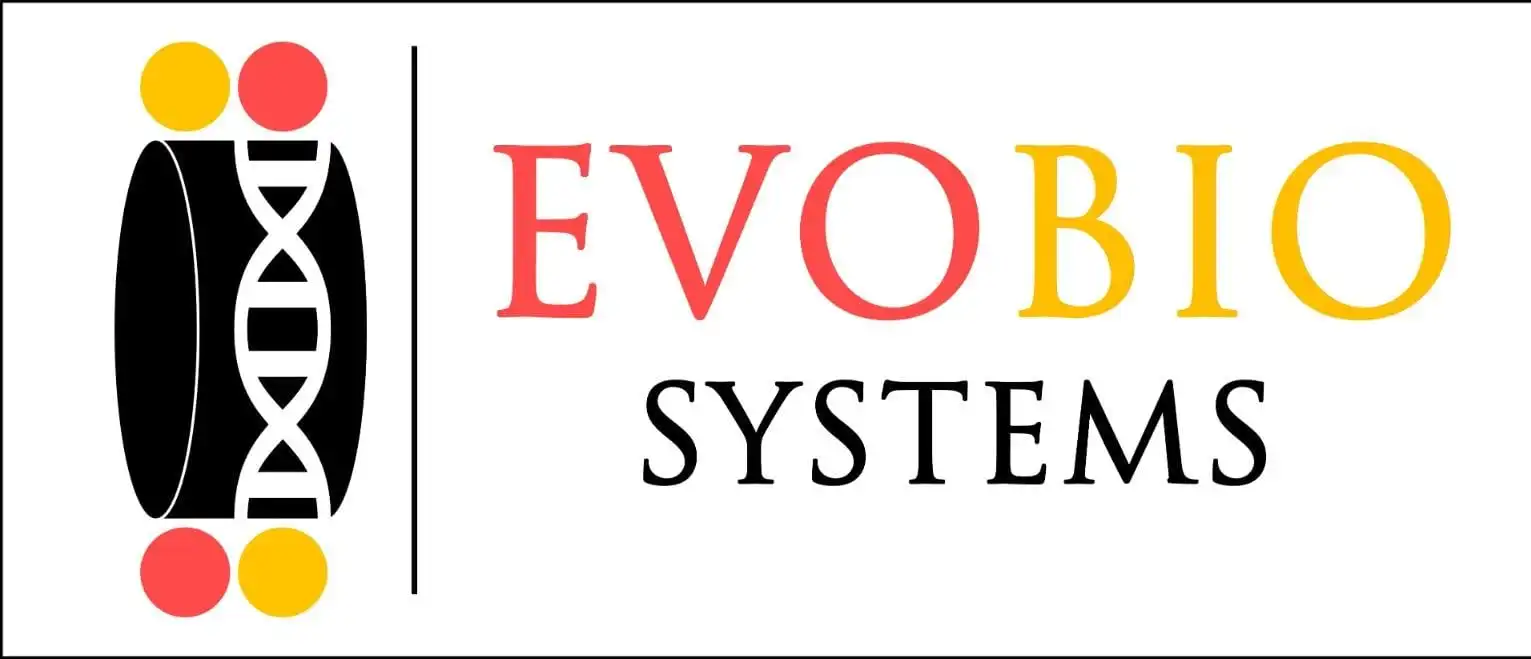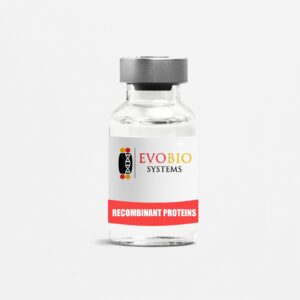Showing 55–63 of 65 results
-
Recombinant Human AURORA B (N-GST tag)
Product Details
Gene ID N/A Accession NM_004217 Alternative Name AURKB, AIK2; AIM1; ARK2; AurB; IPL1; AIM-1; STK12 Species Human Source Insect cells Description AURORA B is a member of the Aurora kinase family that associates with microtubules during chromosome movement and segregation. AURORA B localizes to the microtubules near kinetochores, specifically to the specialized microtubules called K-fibers . AURORA B inhibits the microtubule depolymerizing activity of mitotic centromere-associated kinesin (MCAK) by phosphorylating MCAK on Ser92 . This phosphorylation also regulates MCAK translocalization from kinetochores to the centromere. AURORA B has been identified as a target for the development of new anticancer agents since inhibition of AURORA B gives rise to the more pronounced antiproliferative phenotype. Accession NM_004217 Functions The specific activity of AURORA B was determined to be 162 nmol /min/mg as per activity assay protocol. Formulation 50mM Tris-HCl, pH 7.5, 150mM NaCl, 0.25mM DTT, 0.1mM EGTA, 0.1mM EDTA, 0.1mM PMSF, 25% glycerol. Solubility N/A Appearance Liquid Molecular Weight 68 Purity 70% – 90% Shipping Condition Dry Ice Storage Condition Store product at ?70?C. For optimal storage, aliquot target into smaller quantities after centrifugation and store at recommended temperature. For most favorable performance, avoid repeated handling and multiple freeze/thaw cycles. $0.00(No) -
Recombinant Human AURORA C (N-GST tag)
Product Details
Gene ID N/A Accession NM_003160 Alternative Name AURKC, AIE2, AIK3, AurC, STK13, aurora-C Species Human Source Insect cells Description Aurora C is a member of mitotic serine/threonine kinases that regulate centrosome maturation, chromosome segregation, and cytokinesis. Aurora C has been shown to contribute to oncogenic transformation and is frequently overexpressed and amplified in many human tumors . Aurora C overexpression has been correlated with centrosome amplification, which can be a driving cause of genomic instability in tumor cells. Aurora C is an important regulator of both genomic integrity and cell cycle progression in cancer cells and is an attractive target for anticancer drug development . Accession NM_003160 Functions The specific activity of AURORA C was determined to be 65 nmol /min/mg as per activity assay protocol Formulation 50mM Tris-HCl, pH 7.5, 150mM NaCl, 0.25mM DTT, 0.1mM EGTA, 0.1mM EDTA, 0.1mM PMSF, 25% glycerol. Solubility N/A Appearance Liquid Molecular Weight 61 Purity 70% – 90% Shipping Condition Dry Ice Storage Condition Store product at ?70?C. For optimal storage, aliquot target into smaller quantities after centrifugation and store at recommended temperature. For most favorable performance, avoid repeated handling and multiple freeze/thaw cycles. $0.00(No) -
Recombinant Human AXL (N-His tag)
Product Details
Gene ID N/A Accession NM_021913 Alternative Name UFO, JTK11 Species Human Source Insect cells Description ?AXL is a member of the receptor tyrosine kinase family which has oncogenic potential and is implicated in human myeloid leukemia . AXL is a member of a complex signaling network that is involved in the control of cell proliferation and differentiation. Overexpression of AXL cDNA in NIH 3T3 cells induces neoplastic transformation of these cells with the concomitant appearance of a 140kDa AXL tyrosine-phosphorylated protein . Expression of AXL cDNA in the baculovirus system results in the expression of the appropriate recombinant protein that is recognized by antiphosphotyrosine antibodies, confirming that the AXL protein is tyrosine phosphorylated. Accession NM_021913 Functions The specific activity of AXL was determined to be 104 nmol /min/mg as per activity assay protocol Formulation 50mM NaPhosphate, pH7.0, 300mM NaCl, 150mM imidazole, 0.1mM PMSF, 0.2mM DTT, 25% glycerol. Solubility N/A Appearance Liquid Molecular Weight 55 Purity 70% – 90% Shipping Condition Dry Ice Storage Condition Store product at ?70?C. For optimal storage, aliquot target into smaller quantities after centrifugation and store at recommended temperature. For most favorable performance, avoid repeated handling and multiple freeze/thaw cycles. $0.00(No) -
Recombinant Human BAFF-R (TNFRSF13C)
Product Details
Gene ID 115650 Accession Q96RJ3 Alternative Name Tumor necrosis factor receptor superfamily member 13C, TNFRSF13C, B-cell-activating factor receptor, BAFF receptor, BAFFR, BLyS receptor 3, CD_antigen=CD268 Species Human Source E. coli Description The B cell-activating factor from the TNF family (BAFF), is emerging as an important regulator of B cell and T cell responses. BAFF was originally identified as a factor responsible for B cell survival and maturation. BAFF binds to several receptors. These include transmembrane activator and calcium modulator and cyclophilin ligand interactor (TACI), BAFF-R (BR3), and B cell maturation Ag (BCMA). BAFF-R appears to be particularly important for the regulation of B cell survival and maturation in the spleen, because A/WySnJ mice expressing a defective BAFF-R have disrupted B cell maturation, similar to that seen in BAFF-deficient mice. Accession Q96RJ3 Functions The ED50 was determined by the dose-dependent proliferation of Raji cells and was found to be <0.5ng/mL. Formulation Lyophilized from a 0.2 ?m filtered solution PBS Solubility A quick spin of the vial followed by reconstitution in distilled water to a concentration not less than 0.1 mg/mL. This solution can then be diluted into other buffers. Appearance Lyophilized Powder Molecular Weight 9 Purity >95% as determined by SDS-PAGE Concentration <1.0 EU/μg of recombinant protein as determined by the LAL method Shipping Condition Ambient Temperature Storage Condition The lyophilized protein is stable for at least one year from date of receipt at -70?C. Upon reconstitution, this cytokine can be stored in working aliquots at 2? – 8?C for one month, or at -20?C for six months, with a carrier protein without detectable loss of activity. Avoid repeated freeze/thaw cycles. $0.00(No) -
Recombinant Human BAFF-R (TNFRSF13C)
Product Details
Gene ID 115650 Accession Q96RJ3 Alternative Name Tumor necrosis factor receptor superfamily member 13C, TNFRSF13C, B-cell-activating factor receptor, BAFF receptor, BAFFR, BLyS receptor 3, CD_antigen=CD268 Species Human Source E. coli Description The B cell-activating factor from the TNF family (BAFF), is emerging as an important regulator of B cell and T cell responses. BAFF was originally identified as a factor responsible for B cell survival and maturation. BAFF binds to several receptors. These include transmembrane activator and calcium modulator and cyclophilin ligand interactor (TACI), BAFF-R (BR3), and B cell maturation Ag (BCMA). BAFF-R appears to be particularly important for the regulation of B cell survival and maturation in the spleen, because A/WySnJ mice expressing a defective BAFF-R have disrupted B cell maturation, similar to that seen in BAFF-deficient mice. Accession Q96RJ3 Functions The ED(50) was determined by the ability to block BAFF induced survival of splenocyte cells, and was found to be in the range of 1-5 ug/mL. Formulation Recombinant BAFF-R was lyophilized from a 0.2 ?m filtered solution in 2.5% glycine, 0.5% sucrose, 0.01% Tween80, 5 mM Glutamic acid, pH 4.5. Solubility A quick spin of the vial followed by reconstitution in distilled water to a concentration not less than 0.1 mg/mL. This solution can then be diluted into other buffers. Appearance Lyophilized Powder Molecular Weight 9 Purity >95% as determined by SDS-PAGE Concentration <1.0 EU/μg of recombinant protein as determined by the LAL method. Shipping Condition Ambient Temperature Storage Condition The lyophilized protein is stable for at least one year from date of receipt at -70?C. Upon reconstitution, this cytokine can be stored in working aliquots at 2? – 8?C for one month, or at -20?C for six months, with a carrier protein without detectable loss of activity. Avoid repeated freeze/thaw cycles. $0.00(No) -
Recombinant Human BAFF-R (TNFRSF13C)
Product Details
Gene ID 115650 Accession Q96RJ3 Alternative Name Tumor necrosis factor receptor superfamily member 13C, TNFRSF13C, B-cell-activating factor receptor, BAFF receptor, BAFFR, BLyS receptor 3, CD_antigen=CD268 Species Human Source E. coli Description The B cell-activating factor from the TNF family (BAFF), is emerging as an important regulator of B cell and T cell responses. BAFF was originally identified as a factor responsible for B cell survival and maturation. BAFF binds to several receptors. These include transmembrane activator and calcium modulator and cyclophilin ligand interactor (TACI), BAFF-R (BR3), and B cell maturation Ag (BCMA). BAFF-R appears to be particularly important for the regulation of B cell survival and maturation in the spleen, because A/WySnJ mice expressing a defective BAFF-R have disrupted B cell maturation, similar to that seen in BAFF-deficient mice. Accession Q96RJ3 Functions The ED(50) was determined by the ability to block BAFF induced survival of splenocyte cells, and was found to be in the range of 1-5 ug/mL. Formulation Recombinant BAFF-R was lyophilized from a 0.2 ?m filtered solution in 2.5% glycine, 0.5% sucrose, 0.01% Tween80, 5 mM Glutamic acid, pH 4.5. Solubility A quick spin of the vial followed by reconstitution in distilled water to a concentration not less than 0.1 mg/mL. This solution can then be diluted into other buffers. Appearance Lyophilized Powder Molecular Weight 9 Purity >95% as determined by SDS-PAGE Concentration <1.0 EU/μg of recombinant protein as determined by the LAL method. Shipping Condition Ambient Temperature Storage Condition The lyophilized protein is stable for at least one year from date of receipt at -70?C. Upon reconstitution, this cytokine can be stored in working aliquots at 2? – 8?C for one month, or at -20?C for six months, with a carrier protein without detectable loss of activity. Avoid repeated freeze/thaw cycles. $0.00(No) -
Recombinant Human BAFF/BLYS (TNFSF13B)
Product Details
Gene ID N/A Accession Q9Y275 Alternative Name Tumor necrosis factor ligand superfamily member 13B, TNFSF13B, TNFSF20, B lymphocyte stimulator, BLyS, B-cell-activating factor belonging to the TNF family, BAFF, Dendritic cell-derived TNF-like molecule, TNF- and APOL-related leukocyte expressed ligand 1, TALL-1, THANK, CD_antigen=CD257, BLYS, TALL1, ZTNF4 Species Human Source CHO cells Description The B cell-activating factor from the TNF family (BAFF), is emerging as an important regulator of B cell and T cell responses. BAFF was originally identified as a factor responsible for B cell survival and maturation .BAFF binds to several receptors. These include transmembrane activator and calcium modulator and cyclophilin ligand interactor (TACI), BAFF-R (BR3), and B cell maturation Ag (BCMA). BAFF-R appears to be particularly important for the regulation of B cell survival and maturation in the spleen, because A/WySnJ mice expressing a defective BAFF-R have disrupted B cell maturation, similar to that seen in BAFF-deficient mice. Accession Q9Y275 Functions The ED(50) was determined by a cell proliferation assay using anti-IgM stimulated murine B cells, and is less than 2.0 ng/mL, corresponding to a specific activity of 5.0 x 10^5 IU/mg. Formulation Recombinant Human BAFF was lyophilized from a 0.2 ?m filtered solution in PBS, pH 7.5. Solubility A quick spin of the vial followed by reconstitution in distilled water to a concentration not less than 0.1 mg/mL. This solution can then be diluted into other buffers. Appearance Lyophilized Powder Molecular Weight 18 Purity >95% as determined by SDS-PAGE Concentration <1.0 EU/μg of recombinant protein as determined by the LAL method. Shipping Condition Ambient Temperature Storage Condition The lyophilized protein is stable for at least one year from date of receipt at -70?C. Upon reconstitution, this cytokine can be stored in working aliquots at 2? – 8?C for one month, or at -20?C for six months, with a carrier protein without detectable loss of activity. Avoid repeated freeze/thaw cycles. $0.00(No) -
Recombinant Human BCA-1 (CXCL13)
Product Details
Gene ID 10563 Accession Q53X90 Alternative Name BLC, B cell Attracting Chemokine-1, CXCL13, C-X-C motif chemokine 13, BCA1 Species Human Source E. coli Description The homeostatic chemokine CXCL13 is constitutively expressed in secondary lymphoid tissue and initiates lymphoid neogenesis when expressed aberrantly in mice. CXCL13 has also been detected in chronic inflammation associated with human lymphoid neogenesis, suggesting a pathogenic role. Follicular dendritic cells (FDCs) are generally considered to be the major source of CXCL13 both in normal and aberrant lymphoid tissue. CXCL13 has been the exclusive ligand for CXCR5, which initiates chemotaxis toward an increasing gradient in vitro and to B cell zones in lymph nodes that express CXCL13. More recently, CXCR5 expression has also been shown in DN T cells in mice, a subset of CD4 follicular Th cells, and some tonsillar CD4+ and CD25+ Tregs in humans. Accession Q53X90 Functions Determined by its ability to chemoattract human CXCR5 transfected mouse BaF3 B cells, the ED(50) is less than 20 ng/mL. Formulation Recombinant BCA-1 was lyophilized from a 0.2 ?m filtered 20 mM PB,100 mM NaCl solution pH 7.5. Solubility A quick spin of the vial followed by reconstitution in distilled water to a concentration not less than 0.1 mg/mL. This solution can then be diluted into other buffers. Appearance Lyophilized Powder Molecular Weight 10 Purity >95% as determined by SDS-PAGE Concentration <1.0 EU/μg of recombinant protein as determined by the LAL method. Shipping Condition Ambient Temperature Storage Condition The lyophilized protein is stable for at least one year from date of receipt at -70?C. Upon reconstitution, this cytokine can be stored in working aliquots at 2? – 8?C for one month, or at -20?C for six months, with a carrier protein without detectable loss of activity. Avoid repeated freeze/thaw cycles. $0.00(No) -
Recombinant Human BCA-1 (CXCL13)
Product Details
Gene ID 10563 Accession O43927 Alternative Name BCA1, BLC, B cell Attracting Chemokine-1, CXCL13, C-X-C motif chemokine 13 Species Human Source E. coli Description The homeostatic chemokine CXCL13 is constitutively expressed in secondary lymphoid tissue and known to initiate lymphoid neogenesis when expressed aberrantly in mice. CXCL13 has also been detected in chronic inflammation associated with human lymphoid neogenesis, suggesting a pathogenic role. Follicular dendritic cells are generally considered to be the major source of CXCL13 both in normal and aberrant lymphoid tissue. CXCL13 has been the exclusive ligand for CXCR5, which initiates chemotaxis toward an increasing gradient in vitro and to B cell zones in lymph nodes that express CXCL13. More recently, CXCR5 expression has also been shown in DN T cells in mice, a subset of CD4 follicular Th cells, and some tonsillar CD4+ and CD25+ Tregs in humans. Accession O43927 Functions Determined by its ability to chemoattract human CXCR5 transfected mouse BaF3 B cells, the ED(50) is less than 20 ng/mL Formulation Lyophilized from a 0.2 ?m filtered solution in PB,100 mM NaCl, pH 7.5 Solubility A quick spin of the vial followed by reconstitution in distilled water to a concentration not less than 0.1 mg/mL. This solution can then be diluted into other buffers. Appearance Lyophilized Powder Molecular Weight 10 Purity >95% as determined by SDS-PAGE Concentration <1.0 EU/μg of recombinant protein as determined by the LAL method Shipping Condition Ambient Temperature Storage Condition The lyophilized protein is stable for at least one year from date of receipt at -70?C. Upon reconstitution, this cytokine can be stored in working aliquots at 2? – 8?C for one month, or at -20?C for six months, with a carrier protein without detectable loss of activity. Avoid repeated freeze/thaw cycles. $0.00(No)






